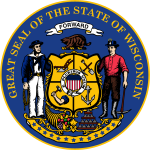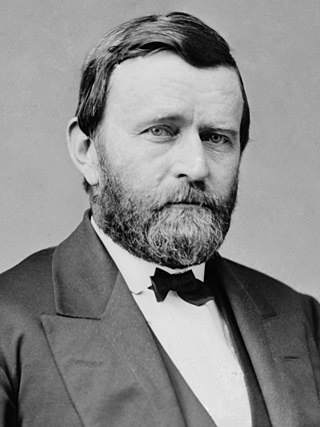
The 1868 United States presidential election was the 21st quadrennial presidential election, held on Tuesday, November 3, 1868. In the first election of the Reconstruction Era, Republican nominee Ulysses S. Grant defeated Horatio Seymour of the Democratic Party. It was the first presidential election to take place after the conclusion of the American Civil War and the abolition of slavery. It was the first election in which African Americans could vote in the reconstructed Southern states, in accordance with the First Reconstruction Act.
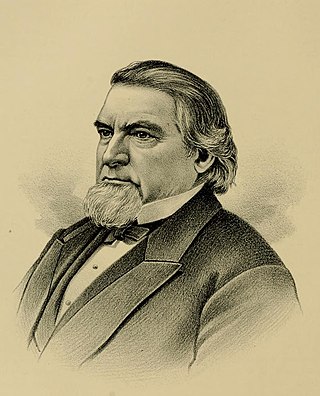
Cadwallader Colden Washburn was an American businessman, politician, and soldier who founded a mill that later became General Mills. A member of the Washburn family of Maine, he was a U.S. Congressman and governor of Wisconsin, and served as a general in the Union Army during the American Civil War.

Patrick Joseph Lucey was an American politician. A member of the Democratic Party, he served as the 38th Governor of Wisconsin from 1971 to 1977. He was also independent presidential candidate John B. Anderson's running mate in the 1980 presidential election.

James Rood Doolittle Sr. was an American politician who served as a U.S. Senator from Wisconsin from March 4, 1857, to March 4, 1869. He was a strong supporter of President Abraham Lincoln's administration during the American Civil War.

Israel Washburn Jr. was a United States political figure who was the Governor of Maine from 1861 to 1863. Originally a member of the Whig Party, he later became a founding member of the Republican Party. In 1842, Washburn served in the Maine House of Representatives.
The 1868 Democratic National Convention was held at the Tammany Hall headquarters building in New York City between July 4, and July 9, 1868. The first Democratic convention after the conclusion of the American Civil War, the convention was notable for the return of Democratic Party politicians from the Southern United States.

John James Jenkins was an English American immigrant, lawyer, judge, and Republican politician. He served seven terms as a member of the United States House of Representatives, representing northwest Wisconsin, and served one year as United States district judge for the District of Puerto Rico.
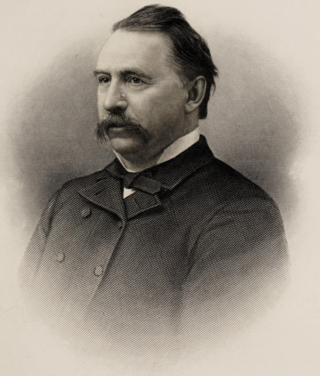
John Winans was an American lawyer and politician in Janesville, Wisconsin. He served one term in the United States House of Representatives from Wisconsin's 1st congressional district, and served six years in the Wisconsin State Assembly representing Janesville and central Rock County. He also held several local offices, including two terms as Mayor of Janesville.
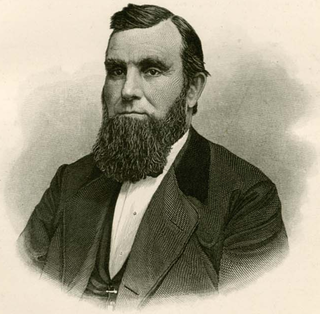
Milton Howard Pettit was an American businessman, Republican politician, and Wisconsin pioneer. He was the 11th lieutenant governor of Wisconsin, during the governorship of Cadwallader C. Washburn, and died while in office. Earlier, he had been mayor of Kenosha, Wisconsin, and had represented Kenosha in the Wisconsin State Senate.

Paul R. Alfonsi was an American educator, businessman, and Progressive Republican politician from northern Wisconsin. He was the 55th speaker of the Wisconsin State Assembly, and served a total of 20 years in the Assembly, spread over the 1930s, 1950s, and 1960s. Later in his career, he also served two terms as majority leader and half a term as minority leader, when he was convicted of receiving a bribe—that conviction was later reversed by the Wisconsin Supreme Court.

Charles Rice Gill was an American lawyer, politician, and Union Army officer in the American Civil War. He was the 9th Attorney General of Wisconsin and represented northern Jefferson County in the Wisconsin State Senate for the 1860 and 1861 sessions. He also briefly served as U.S. Commissioner of Pensions under President Ulysses S. Grant.

Mortimer Melville Jackson was an American lawyer, judge, and diplomat. He was a justice of the original Wisconsin Supreme Court from 1848 through 1853 and was later a United States consul general in Canada for twenty years. Prior to Wisconsin statehood, he was Attorney General of the Wisconsin Territory.
The Reform Party, also called Liberal Reform Party or People's Reform Party, was a short-lived coalition of Democrats, reform and Liberal Republicans, anti-temperance forces, and Grangers formed in 1873 in the U.S. state of Wisconsin, which secured the election for two years of William Robert Taylor as Governor of Wisconsin, as well as electing a number of state legislators.
Eliphalet Steele Miner was an American merchant, Republican politician, and Wisconsin pioneer. He was the first American settler at Necedah, Wisconsin, and represented Juneau County for four years in the Wisconsin Legislature. He was also the first county judge of Adams County, Wisconsin, despite not having a legal background. In historical documents, his name is frequently abbreviated as E. S. Miner.

The 1861 Wisconsin gubernatorial election was held on November 5, 1861. Republican Party candidate Louis P. Harvey won the election with 54% of the vote, defeating Democratic candidate Benjamin Ferguson.

The 1863 Wisconsin gubernatorial election was held on November 3, 1863. Republican Party candidate James T. Lewis won the election with nearly 60% of the vote, defeating Democratic candidate Henry L. Palmer.

The 1865 Wisconsin gubernatorial election was held on November 7, 1865. Republican Party candidate Lucius Fairchild won the election with nearly 55% of the vote, defeating Democratic candidate Harrison Carroll Hobart.

The 1869 Wisconsin gubernatorial election was held on November 2, 1869. Incumbent Republican Party Governor Lucius Fairchild won re-election with over 53% of the vote, defeating Democratic candidate Charles D. Robinson.
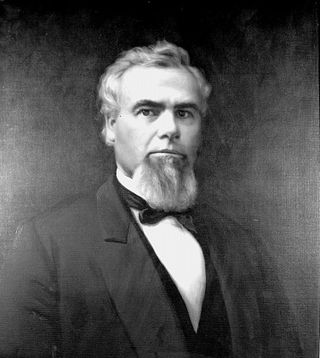
The 1873 Wisconsin gubernatorial election was held on November 4, 1873. Democratic Party candidate William Robert Taylor was elected with 55% of the vote, defeating incumbent Republican Governor Cadwallader C. Washburn.

The 1877 Wisconsin gubernatorial election was held on November 6, 1877. Under internal party pressure, incumbent Republican Governor Harrison Ludington, who had barely won the 1875 election, was pressured to not seek a second term. Former State Assembly Speaker William E. Smith, a longtime figure in Wisconsin politics, was selected as the Republican nominee, and Milwaukee County Municipal Judge Thomas A. Mallory won a protracted battle for the nomination at the Democratic convention. Smith and Mallory were joined in the general election by Greenback nominee Edward Phelps Allis. Ultimately, though the Republican vote share shrunk relative to 1875, the Democratic vote share shrunk more, and Smith won a larger victory than Ludington did, though only with a 44% plurality.

